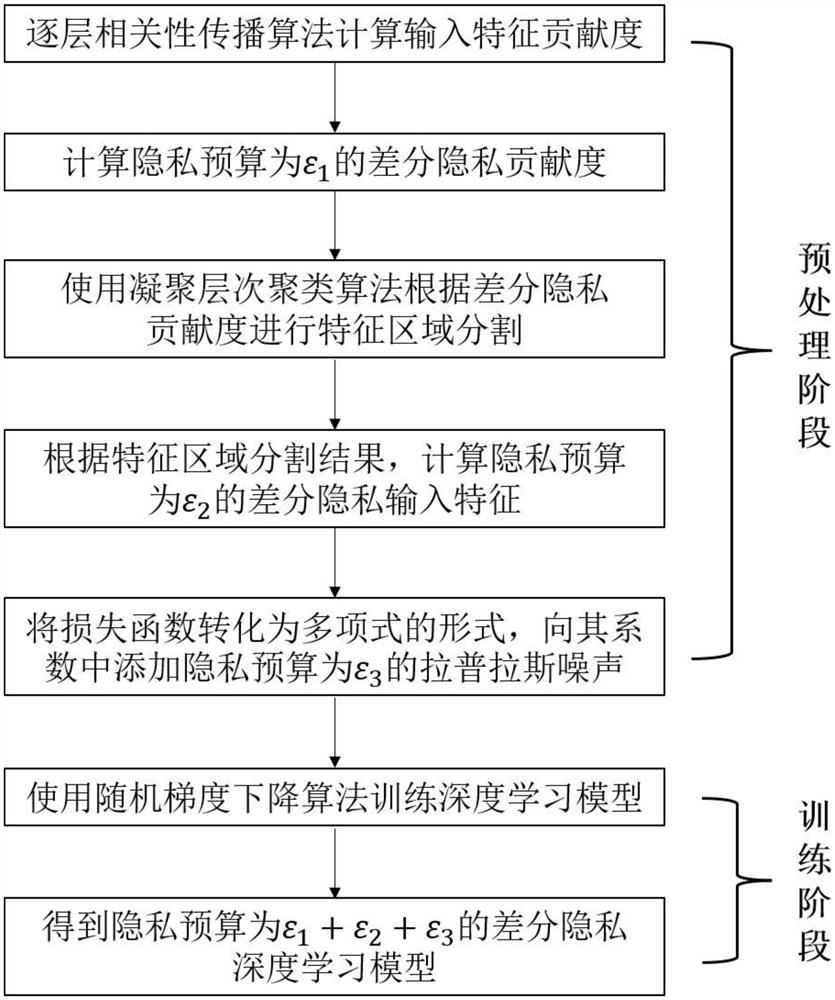Differential privacy deep learning method based on feature region segmentation
A feature area segmentation and differential privacy technology, applied in the field of deep learning and network security, to achieve the effect of maintaining usability, narrowing the gap, and ensuring privacy
- Summary
- Abstract
- Description
- Claims
- Application Information
AI Technical Summary
Problems solved by technology
Method used
Image
Examples
Embodiment Construction
[0095] The specific embodiments of the present invention are described clearly and completely below:
[0096] like figure 1 As shown, a differential privacy deep learning method based on feature region segmentation includes the following steps:
[0097] Step 1. Differential privacy protection for input feature contribution, the specific operations are as follows:
[0098] 1.1) Use the layer-by-layer correlation propagation algorithm to calculate the contribution of each input feature of each piece of training data to the model output, including:
[0099] a) Calculate the input data x i After the output layer h l The contribution of the neuron p on the model output: the training data set D = {x 1 ,x 2 ,…,x n } by the input layer h 0 Input the model to be trained, through the hidden layer h={h 1 ,h 2 ,...,h l-1 }, and then by the output layer h l get model output Take it as the total correlation, and decompose it backwards layer by layer, thereby obtaining the input...
PUM
 Login to View More
Login to View More Abstract
Description
Claims
Application Information
 Login to View More
Login to View More - R&D
- Intellectual Property
- Life Sciences
- Materials
- Tech Scout
- Unparalleled Data Quality
- Higher Quality Content
- 60% Fewer Hallucinations
Browse by: Latest US Patents, China's latest patents, Technical Efficacy Thesaurus, Application Domain, Technology Topic, Popular Technical Reports.
© 2025 PatSnap. All rights reserved.Legal|Privacy policy|Modern Slavery Act Transparency Statement|Sitemap|About US| Contact US: help@patsnap.com



